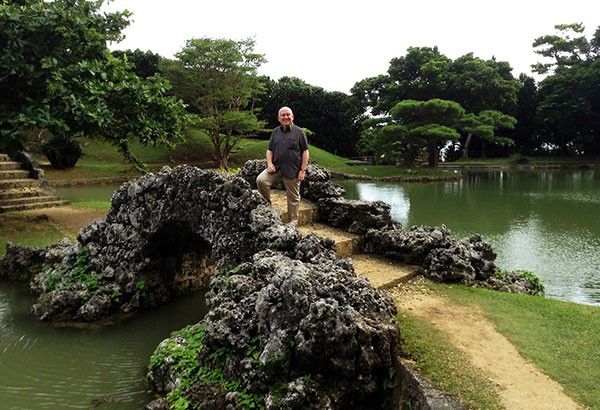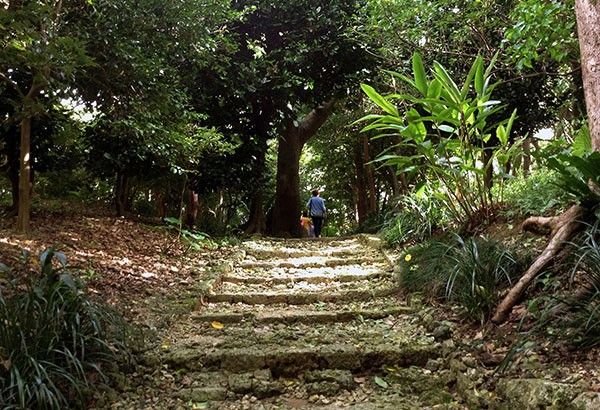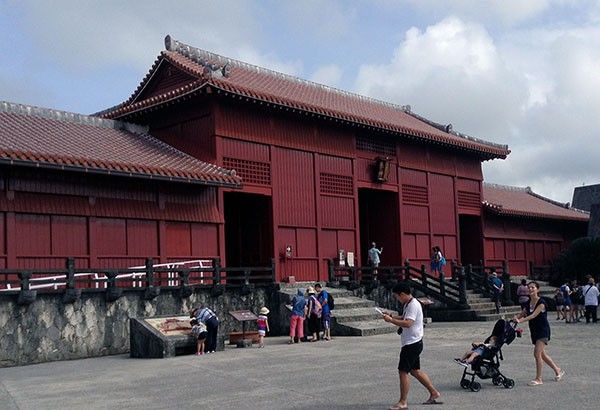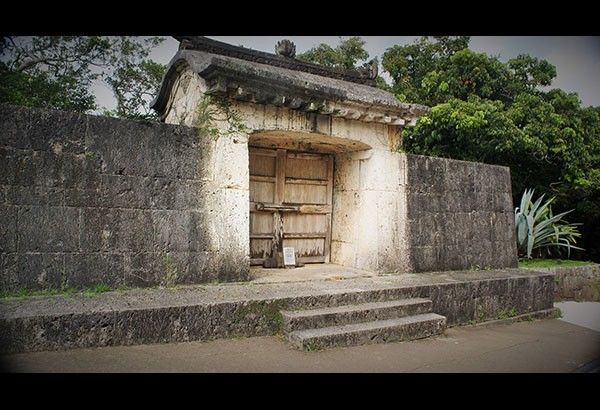Okinawa: kingdom without an army

MANILA, Philippines - It was never easy to paint what Okinawa was all about, for it seemed to be depicted as an undecipherable mosaic – from stories about tropical islands often devastated by the frequent typhoons, to the wastes of the 1945 Okinawan War, which caused significant damage.
To add to the confusion, today, we read about cloudless skies, lush forests and azure waters bustling with marine life, which has contributed to what has become an ideal destination for rest and relaxation, with numerous posh hotels and opulent resorts, thrilling activities and intriguing attractions, plus endless food choices.
With all this information teasing my mind, I just had to know more about Okinawa first-hand, to translate my preconceived notions into partial reality. And being the cruise junkie that I am, upon receipt of an offer for an almost week-long sail to lesser known Japanese Islands – Okinawa included – I immediately pounced on the deal, booked my trip and packed my bags.
We soon learned that Okinawa, to my surprise, is apparently an archipelagic group of several islands spanning 466 square miles, approximately 1,600 kilometers from Imperial Tokyo.
What caught my interest in a place so remote is a kingdom, which lasted from 1492 till 1879 – with some gap years in between – tucked away in the rustic forests with stretched-out protective walls and numerous gates which lead to fortified castles and lavish palaces. From the wreckage of wars, these have been rebuilt and reconstructed faithfully based on historical blueprints, ancient records and aged pictures – all too painfully accurate, that it has been hailed as a World Heritage Site in 2000.
The House of Sho, which ruled the Ryukyu Kingdom, set themselves truly apart from any monarchy, for they were not protected by any standing army and led a realm based solely on diplomacy and trade. Though located in a turbulent part of the region, they defiantly organized trade routes to China, Thailand, Korea and even Siberia.
While several neighboring rulers plotted rebellions and schemed insurgencies, the Ryukyus earned a reputation as honest and trustworthy traders, which kept the territory safe from invasions, in recognition of their essential role in the international market.
In 1609, the feudal lord of Satsuma brought an end to the island’s peace and prosperity, and led the entire clan to swear fealty to Japan.
Today, most descendants of the Sho bloodline live ordinary lives – some own prep schools, plant nurseries and parking garages.
We entered the Stone Gates of the Sonohyan Shrine and gazed on the expanse of the Shurijo Castle park.
Inside is the Suimui-Utaki, a place of worship; though simple in appearance, it has been the inspiration for several endearing melodies and enchanting poetry, as recorded in their oldest musical compilation. According to local mythology, the shrine was willed into existence by the gods.
We spotted a guard standingin a little wooden structure. Dubbed as the Tomoya, its original purpose is still unknown.
Still mystified, we climbed up a flight of stone stairs as the path to yet another gate and finally, after several passageways, the center stage of the kingdom.
Barely containing our excitement, we hurried to the Shurijo Castle, the royal seat for approximately 500 years. Rebuilt with a dash of Chinese influences, the focal point of economy, trade, politics and social life is distinctively familiar, with imprints made of paulownia oil and lacquer coating.
At the center of the arched entrance, the Embellishments of Gable Pediments is adorned with two dragons, clouds patterns, peony flowers and karakusa leaf motifs. Two dracos dubbed as the Great Dragon Pillar – one with mouth open, the other closed – protect the upward steps.
Through relations with other Southeast Asian countries, many items were imported, including textiles, ceramics, sculptures and even music, which were all displayed, viewed and enjoyed.
Inside the seiden – castle to you and me – is a red-paneled and pillared hall, at the center of which is a splendidly-decorated stage, where the king sat for ceremonial rituals. On both sides of the throne were two lesser seats, one for his child and the other for his grandchild.
Not to be missed was the designated area where the ruler and his allies would pray each morning for peace and security of the royal descendants and the kingdom.
The second floor greeted us with an elaborate gilded chair for the queen and other high-ranking female attendants.
We heard of a palace backyard equally dazzling, so our stopover was predetermined.
A short ride away was the second residence of the royal family. Dubbed as the Shikina-En, constructed in the 18th century, it was likewise used as an entertainment getaway for guests from foreign lands.
The main entrance was exclusively used by His Majesty and distinguished Chinese delegates, while the roofed entrances were molded with the Yajo style in mind, which was regarded as a status symbol. It is not surprising then that all of the succeeding arches and portals we passed through during the afternoon were quite similar – though smaller compared to the foremost portal.
We stumbled upon a forest-like enclosure with a root-strewn viridian trail, lined with towering trees and sprouting shrubs, with a notable deliberate absence of blooms, which reminded me of Green Park beside Buckingham Palace in London.
There was water slowly flowing along an enclosure, which drew us to a quaint crystalline spring. It gave us a chance to observe the serene and steady gush towards the pond which covers almost half of the picturesque vista.
The red-tiled-roof Udun, a wooden manor which boasted 15 private rooms, overlooked the azure lake, surrounded by certain structures that we were curious to visit.
We crossed two limestone bridges, one larger than the other, which linked two islets. This finally led us to the Rokkaku-Do, a breathtaking hexagonal kiosk with a black-tiled roof, where Ryukyu royalty and aristocracy would find solace back in the day.
It is said that the Ryukyus worshiped Kikoe-Okimi, goddess for a good harvest but, more importantly – at least for us – a safe voyage home. Knowing this, we silently sought for guidance and safety as we exited the sacred royal grounds. Photos by EDU JARQUE AND GEOFFREY CHU























